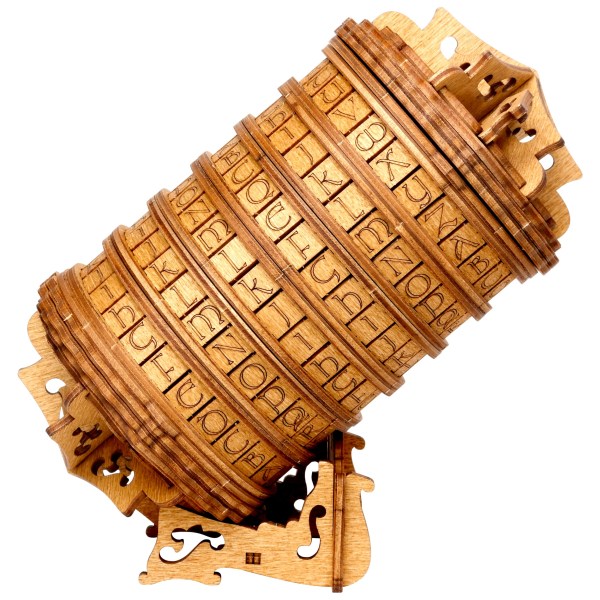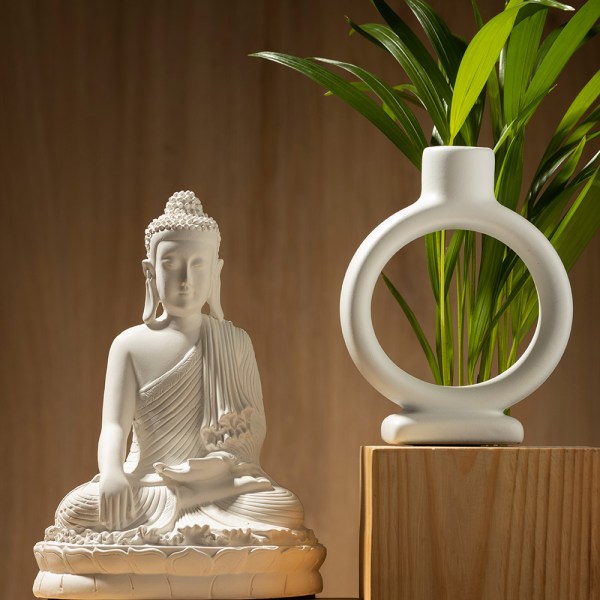Tibetan Prayer Flags: Spiritual Significance and Cultural Traditions

The Tibetan prayer flags, these colorful pieces of fabric adorned with sacred texts, are deeply embedded in Tibetan culture and religious practices. They are not merely aesthetic elements but powerful spiritual and cultural symbols, fluttering across the Himalayan ridges and peaks.
The history and significance of prayer flags go far beyond being mere decorative elements or tourist souvenirs. This article will explore the origins, types, symbolism, modern uses, and environmental and ethical concerns related to prayer flags in detail.
Table of Contents
- Origin of Prayer Flags
- Types of Prayer Flags
- Colors and Symbolism
- Usage and Significance of Prayer Flags
- Modern Prayer Flags
- Conclusion
Origin of Prayer Flags
The history of prayer flags stretches back over a thousand years, closely intertwined with Tibet's spiritual and cultural traditions. Below, we explore how these flags became integral to Tibetan religious practices and examine their origins and development over time.
Bon Religion and the Buddhist Connection
The origin of prayer flags can be traced to Tibet's Bon religion. Bon, Tibet's ancient belief system, used flags during various rituals and healing ceremonies. Bonpo priests employed pre-painted flags to aid in healing and religious rites. With the spread of Buddhism throughout the region, prayer flags adopted Buddhist symbolism and meanings, while traditional Bon practices continued. Thus, through the connection between Bon and Buddhism, prayer flags gained significance in both religions, integrating ancient Tibetan spiritual elements with Buddhist teachings.
Early History of Prayer Flags
Tibetan prayer flags initially began as textiles inscribed with sacred texts, used in ceremonies and rituals. According to legend, the first prayer flags date back to the time of Gautama Buddha, when deities carried battle flags to protect themselves from enemies, the asuras, through prayers and sacred texts. These flags, known as "heavenly banners," symbolized protection and spiritual power. This tradition later spread to Tibet, where it evolved into a key element of local culture and religious practices.
Prayer flags became one of the most important symbols in Tibetan Buddhism, especially in tantric practices, where mantras and sacred texts hold special significance. Placing prayer flags at sacred sites like stupas and monasteries became a custom, symbolizing a search for spiritual protection and blessings. During the Cultural Revolution, however, the significance of prayer flags diminished, and many traditional patterns were lost or destroyed. Despite this, prayer flags remain culturally important in Tibetan regions, where various styles of flags continue to be used.
Types of Prayer Flags
Prayer flags come in two main types: the horizontal Lung ta and the vertical Darchor.
Lung ta - "Wind Horse"
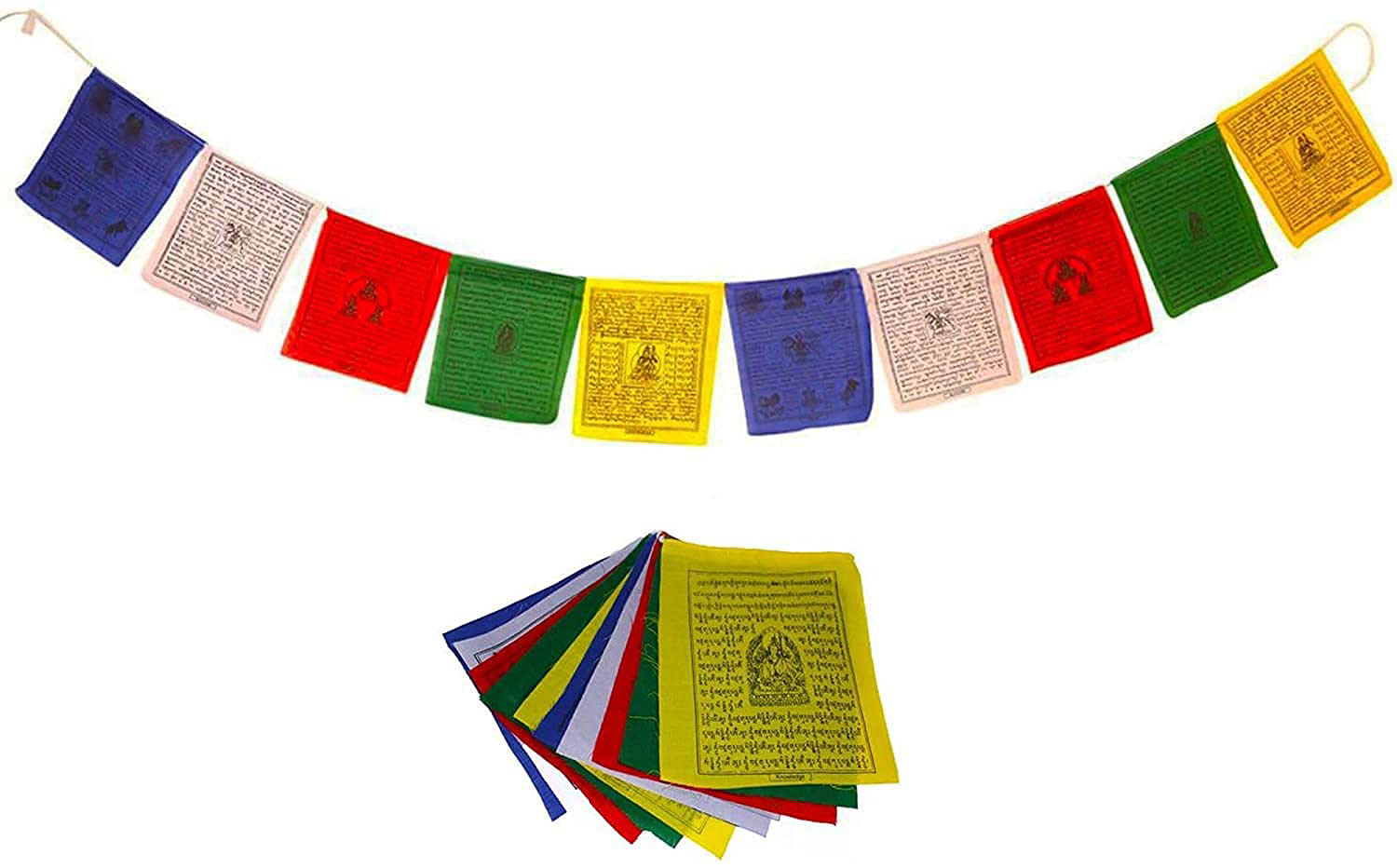
The Lung ta, or "Wind Horse," is the most well-known and widely used type of prayer flag. These colorful, rectangular flags are strung together on a long cord and typically found in high places such as mountain peaks, atop temples and monasteries, and along passes. The Lung ta flags carry specific symbolism aimed at bringing blessings and good fortune to the surrounding environment. The term "Lung ta" originates from the Tibetan words "rlung" (wind) and "rta" (horse), symbolizing the wind's energy, which carries prayers and blessings far and wide.
Darchor - Flag Pole
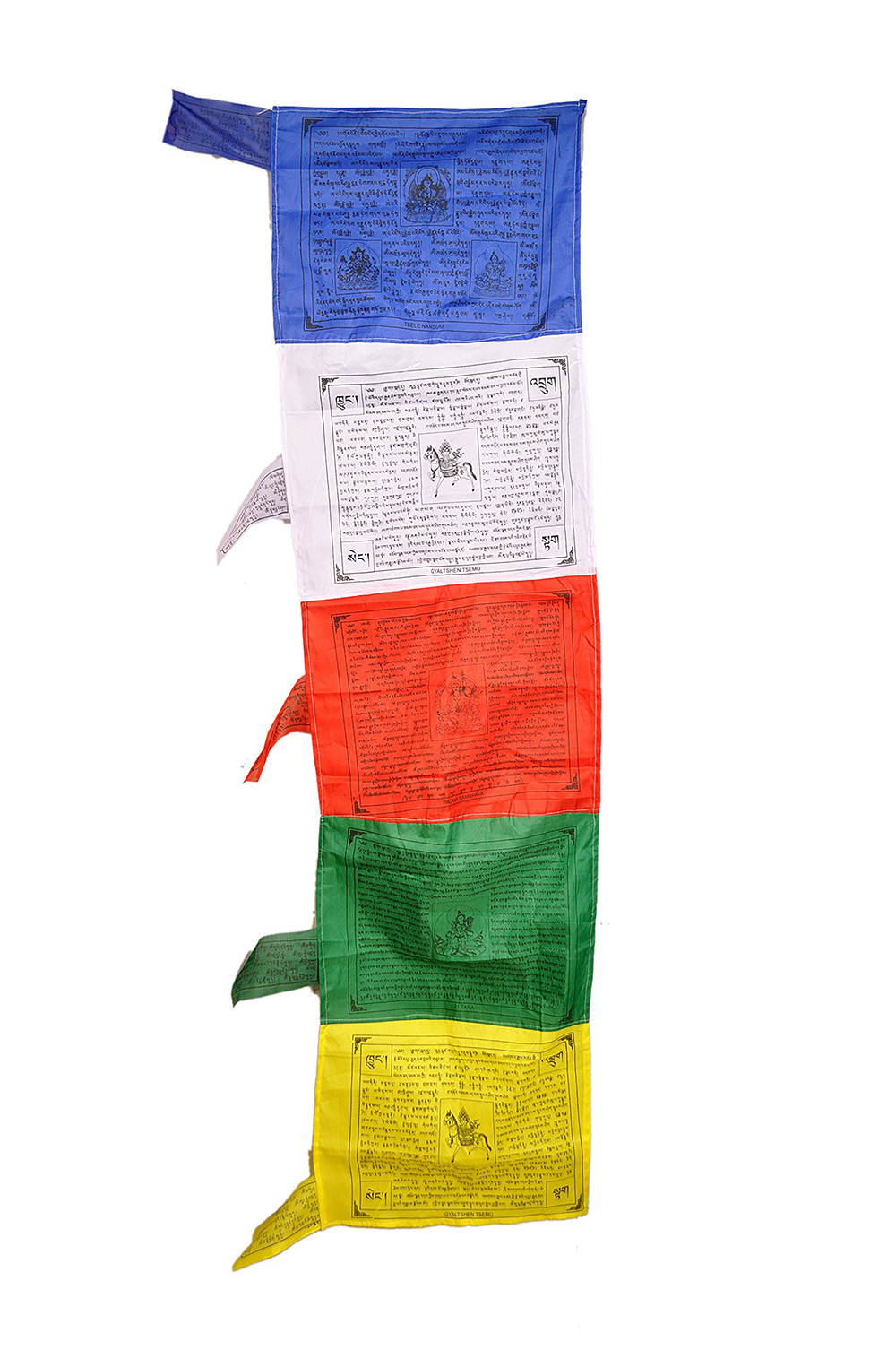
The Darchor flags are long, rectangular banners affixed vertically to poles. They are commonly found at sacred sites such as stupas, mountain peaks, and cairns. These flags specifically symbolize the dharma (Buddhist teachings) and moral principles. Darchor flags are often larger than Lung ta flags and are mounted on tall poles anchored to the ground. These flags are particularly important during significant ceremonies and festivals and are positioned to catch the wind in order to maximize the effectiveness of the prayers.
Colors and Symbolism
The colors and symbols on prayer flags carry deep meaning, closely tied to Tibetan Buddhist teachings and the five elements.
Meaning of the Colors
- Blue: Represents the sky and ether, associated with Buddha Akshobhya.
- White: Symbolizes air and wind, associated with Buddha Amitabha.
- Red: Represents fire, associated with Buddha Vairocana.
- Green: Symbolizes water or air, associated with Buddha Amoghasiddhi.
- Yellow: Represents earth, associated with Buddha Ratnasambhava.
These colors not only represent natural elements but also spiritual energies and teachings. In traditional Tibetan medicine and philosophy, these elements align with the harmony between the human body and the environment, which is essential for health and well-being.
Symbols and Prayers
The center of many prayer flags often features the Lung ta, which represents the Three Flaming Jewels—the Buddha, Dharma, and Sangha. Surrounding the Lung ta are approximately 400 different mantras and sacred texts, addressing various deities and focusing on aspects of life such as protection, prosperity, and spiritual growth.

Among the symbols, you may find images of animals such as the snake, eagle, tiger, and white lion, representing the Four Dignities. In Tibetan Buddhism, these animals symbolize wisdom, strength, courage, and purity. These symbols not only enhance the aesthetic value of the flags but also carry deep spiritual meaning that enhances the potency of the prayers.
Usage and Significance of Prayer Flags
The use of prayer flags is not only a spiritual practice but also a deeply rooted cultural tradition that plays an integral role in the religious and daily lives of the Tibetan people.
Proper Usage and Timing

When hanging prayer flags, it is important to consider the proper place and time. Traditionally, prayer flags are placed in locations where the wind can freely blow, allowing the messages of the sacred texts to be carried far. The ideal time for hanging prayer flags is on a clear, windy day, especially in the morning. Prayer flags should be refreshed annually,especially during the Tibetan New Year, known as Losar, when old flags are replaced with new ones.
Environmental Concerns
The modern use of prayer flags, along with the growth of mass tourism, raises several environmental concerns. Industrially produced prayer flags, often made from synthetic materials like plastic, pose a significant environmental threat. These flags, which do not decompose, contribute to pollution and contradict the nature-centric teachings of Tibetan Buddhism. In contrast, traditional, handmade prayer flags are crafted from natural materials and are fully biodegradable, thus having minimal impact on the environment.
Modern Prayer Flags
The significance of prayer flags persists in the modern era, though their usage and production have undergone considerable changes.
Cultural and Spiritual Influences
Tibetan prayer flags have now spread globally, appearing in various cultures and spiritual practices. Placing prayer flags can be interpreted as a gesture expressing peace, love, and a spiritual connection between nature and people. For many, prayer flags are not just symbols of Tibetan culture and religion but also universal icons that attract individuals around the world to Buddhism and spiritual exploration.
Commercialization and Ethical Issues
The commercialization of prayer flags raises serious ethical concerns. With the rise of tourism and the growing demand on the global market, many prayer flags are now mass-produced, often under poor working conditions and from non-traditional materials. This trend threatens the livelihood of local artisans and communities and leads to the loss of traditional Tibetan culture and spiritual practices. Supporting authentic, handmade prayer flags that respect Tibetan Buddhist values is crucial for preserving cultural heritage.
Conclusion
Tibetan prayer flags have been an integral part of Tibetan culture and religious practices for over a thousand years. These colorful pieces of fabric are not merely decorative items but carry profound spiritual and cultural meaning. The act of placing and using prayer flags helps promote peace, love, and spiritual growth, while also expressing the Tibetan people's faith and religious commitment. It is essential to treat these flags with respect and support authentic, handmade versions that represent the true values of Tibetan Buddhism. Modern challenges, such as environmental concerns and commercialization, continue to pose significant issues, but prayer flags remain enduring symbols of the human spirit and spirituality, offering blessings and benefits to all who encounter them.






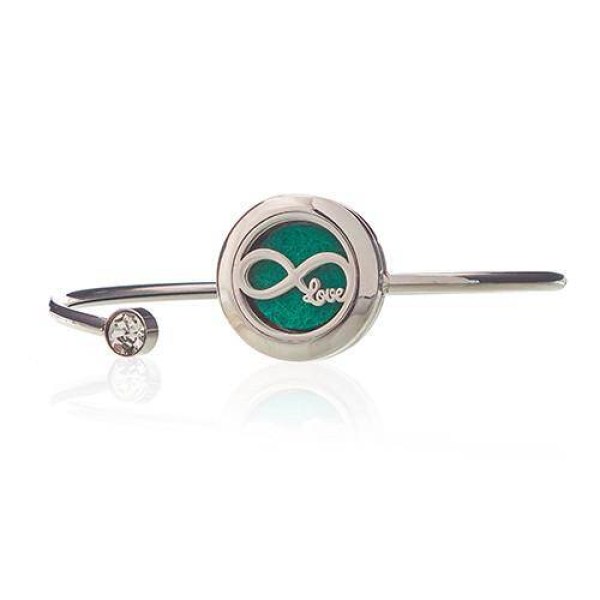














_600x600.jpg)



